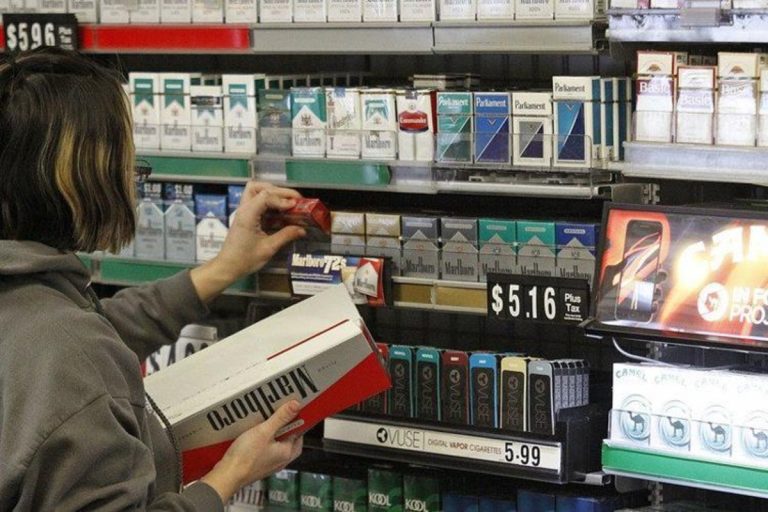🎧 Listen to This Article
A Conservative Tax Shift — and a Strategic One
In a state long celebrated for its low-tax, pro-business stance, Indiana’s decision to double its cigarette tax marks more than a revenue grab — it reflects a deeper reckoning within Republican fiscal strategy. Faced with a projected $2.4 billion budget shortfall, lawmakers have returned to a tool long resisted on partisan grounds: taxing tobacco. But this isn’t just about closing the books. It’s also a signal to other GOP-led states that ideological tax lines may bend when structural deficits loom.
Governor Mike Braun’s finalized 2025 budget includes a $2-per-pack tax on cigarettes — the state’s first hike in nearly two decades — along with increases on all tobacco products, from vapes to chewing tobacco. The move is expected to generate $400 million annually. Yet even proponents acknowledge it’s a partial solution to a much larger fiscal hole.
“Along with the revenue comes a pretty good public policy… to help persuade people either to not start smoking or stop smoking,” said Senate President Pro Tem Rodric Bray.
Why It Matters: More Than Just Revenue
While tobacco taxes are often justified on public health grounds, Indiana’s maneuver has a dual purpose:
- Plugging budget gaps: $400M in new revenue helps ease pressure from a $2.4B shortfall.
- Curbing smoking rates: Public health gains could reduce Medicaid spending — a long-term fiscal benefit.
- Pivoting GOP strategy: Republicans adopting a long-standing Democratic proposal marks a notable political reversal.
Historically, Republican leaders in Indiana balked at tobacco tax hikes, branding them as punitive or anti-growth. Now, with budget math forcing tough choices, the playbook is shifting. The increase aligns with moves in other fiscally constrained states, such as Kansas and Mississippi, where tax hikes on cigarettes or vapes have also re-entered policy conversations.
Winners and Losers: Stakeholder Impact
Who gains?
- Public health agencies gain a powerful deterrent tool, backed by pricing elasticity.
- The state budget gets breathing room — albeit limited — to avoid more painful cuts.
- Employers may benefit from lower long-term healthcare costs and absenteeism.
Who loses?
- Smokers, especially lower-income Hoosiers, who will face a regressive cost burden.
- Tobacco retailers near state borders could lose market share to Kentucky or Missouri.
- Opposition Democrats, who support the tax but bristle at minimal increases in public health spending ($40M only).
Comparing Tobacco Taxation: Indiana vs Neighbors
As of 2024:
- Illinois: $2.98/pack
- Kentucky: $1.10/pack
- Missouri: $0.17/pack (lowest in the U.S.)
- Indiana: Now $2.00/pack (was $0.995)
The move vaults Indiana from the bottom third to the upper tier of cigarette tax states in the Midwest. However, it also creates potential cross-border arbitrage: Hoosiers in border towns may shop out-of-state, as was common in reverse a decade ago.
Strategic Implications: What Comes Next?
For Policymakers:
- Elasticity risk: As taxes rise, consumption may fall faster than projected, reducing long-term revenue gains.
- Political precedent: This could embolden similar measures in Tennessee, Alabama, or Georgia, where Republican leadership faces rising deficits.
For Public Health Coalitions:
- Leverage point: The political momentum could reopen stalled conversations on alcohol and soda taxes.
- Criticism opportunity: Advocates may press lawmakers for more than $40M in local health funding — viewed as underwhelming.
For Businesses and Retailers:
- Adapt pricing strategies at state lines.
- Reevaluate margins on tobacco-adjacent products like vape gear or convenience store bundles.
Budget Cuts and Ideological Tensions
Despite the new revenue, Indiana’s finalized budget enacts 1% cuts across most departments — including higher education and the Indiana Economic Development Corporation. Yet Governor Braun preserved full funding for Child Services and Corrections, and even expanded school choice vouchers by $93M.
“When times get a little tough, it’s when the best and the leanest are prepared to take more market share,” said House Speaker Todd Huston. “For us, market share is population and economic growth.”
What’s notably unchanged? A planned individual income tax cut — suggesting this cigarette tax isn’t a pivot to big government, but a triage tactic to maintain Indiana’s tax-cutting identity while managing near-term gaps.
Final Thought: A Canary in the Fiscal Coal Mine
Indiana’s decision reflects a larger pattern among red states navigating post-COVID budget realities and slowing federal aid. While cigarette taxes won’t solve systemic imbalances, they offer a politically feasible bridge — if only temporarily.
More crucially, they reveal where ideological rigidity yields to fiscal pragmatism. And that may be the real policy shift to watch.
For further details, clarification, contributions, or any concerns regarding this article, please contact us at editorial@tax.news. We value your feedback and are committed to providing accurate and timely information. Please note that our privacy policy will handle all inquiries



